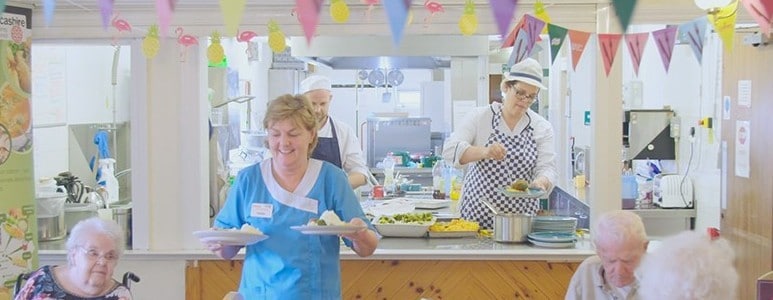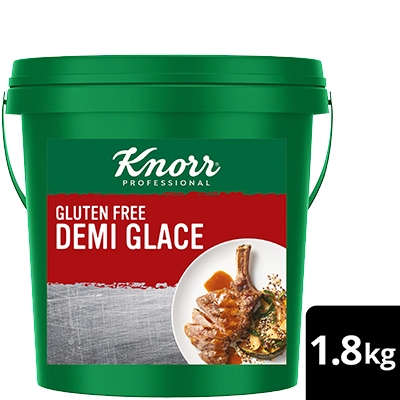From July 2019, new Aged Care Quality Standards will come into effect. It’s a significant change for Aged Care Chefs and hospitality staff as quality improvements in food service are featured prominently.
A notable change is the positioning of the resident (referred to in the document as ‘the consumer’) as the priority. Consideration and commitment to meeting the customers’ needs and improving their overall daily experience is paramount throughout the new standards.
Food services (including meals, food advice, delivery and preparation) is expressly included under Standard 4 “Services and Supports for Daily Living”. The new guidelines state the goal for organisations is for the services and supports it provides, such as food service, “to improve a consumer’s well-being and quality-of-life.”
“A consumer might have some challenges in their health and abilities, but they still have goals they want to achieve. They also have roles that have meaning, and they want to manage their day-to-day life and live as well as they can. Services and supports for daily living cover a wide range of options that aim to support consumers live as independently as possible and enjoy life.”
Food is a universal delight and the essence of an enjoyable life. People may have different interests and personalities, but everyone has their favourite food or a certain way they like it cooked. From the taste, presentation, consideration of a resident’s dietary needs or favourite dishes through to the overall dining experience, delicious, nutritious food can invoke a sense of positive wellbeing and really contribute to a happy daily life in an Aged Care facility.
A spotlight on food and the dining experience

By July, the new Aged Care Quality standards will put the focus on food and the resident’s dining experience like never before.
The new Aged Care Quality Standard 4.6 explicitly states: ‘where meals are provided, they are (to be) varied and of suitable quality and quantity.’
While it’s not outlined exactly what ‘varied’ and of ‘suitable quality and quantity’ looks like, aged care providers will need to demonstrate choice through a varied menu and show they are able to accommodate individual preferences and complex dietary requirements.
Making the dining experience more engaging

Meeting the new quality standards around food services requires a holistic, customer-centric approach, considering all aspects of the dining experience; such as the time allowed, how easy it is to manage and the social component of eating. The role of the dining experience as an engaging, relationship-building experience is a key opportunity for hospitality staff to facilitate genuine social connection between residents who love to have a chat over a meal.
Giving residents choice and input into the menu, plus the support they need to eat every mouthful is another key way to ensure residents’ needs and preferences are met, giving them control over their lives.
Examples of ways Aged Care Chefs know they are meeting the new guidelines
- Residents are involved in planning the menu and they have a choice of suitable and healthy meals, snacks and drinks
- Residents enjoy the meal and drink preferences and menu selections, the menu also meets their medical, cultural, religious or other needs
- The dining experience is comfortable and not rushed, with assistance to eat and drink readily available and provided in a dignified way
- Residents receive a variety of well-proportioned, quality meals and staff give them something to eat or drink if they are hungry or thirsty outside normal catering hours
- Food and drinks are placed within reach and in a form the resident can eat and drink, such as finger food, or modified meals or thickened drinks, where appropriate
- Staff describe how they create an engaging mealtime experience that encourages residents to eat and drink
- Aged Care chefs make sure meals vary and are of suitable quality and quantity
- Staff can meet a resident’s request for changes to meals or drinks in a timely manner
- Aged Care Chefs know the consumers’ nutrition and hydration needs, preferences and how to support consumers’ independence (such as preferred meal size, dietary or cultural needs and any modifications needed)
- Aged Care Chefs report any changes to a consumer’s appetite or eating habits, or concerns about weight loss or dehydration. This includes knowing when specialist nutritional advice is required and how to access it
- Training, communication and reporting processes are effective to achieve the above examples
Being able to demonstrate compliance with the new guidelines will be a priority for every residential Aged Care facility and being well-prepared for audits will certainly help smooth the transition process.

Disclaimer: The content of this article is created for inspiration purposes only. It is not intended as clinical, medical or nutritional advice.
Related Articles
Top recipes
-
Stuffed Baked Mushrooms -
Canadian Baked Vegetable Poutine with Mushroom Gravy -
Slow Braised Beef Brisket with Cauliflower Puree -
Lamb Schnitzel with Rosemary Parmesan Crumb -
Pork Belly with Sauteed Apples and Cider Gravy -
Honey Garlic Chicken Stir Fry -
Braised Lamb Rissoles and Mongolian Sauce -
Chasseur Sauce -
Butter Chicken Casserole -
Mexican Loaded Sweet Potatoes -
Braised Lamb Rump with Creamy Mushroom Sauce -
Slow Cooked Lamb Shoulder -
Pork Sugo, Pronto Jus
Related Products
Log in or Create an account to access:
- Get access to this content
- Discover the latest culinary trends
- Explore and save your favourite recipes
- Watch free video training courses for chefs






















